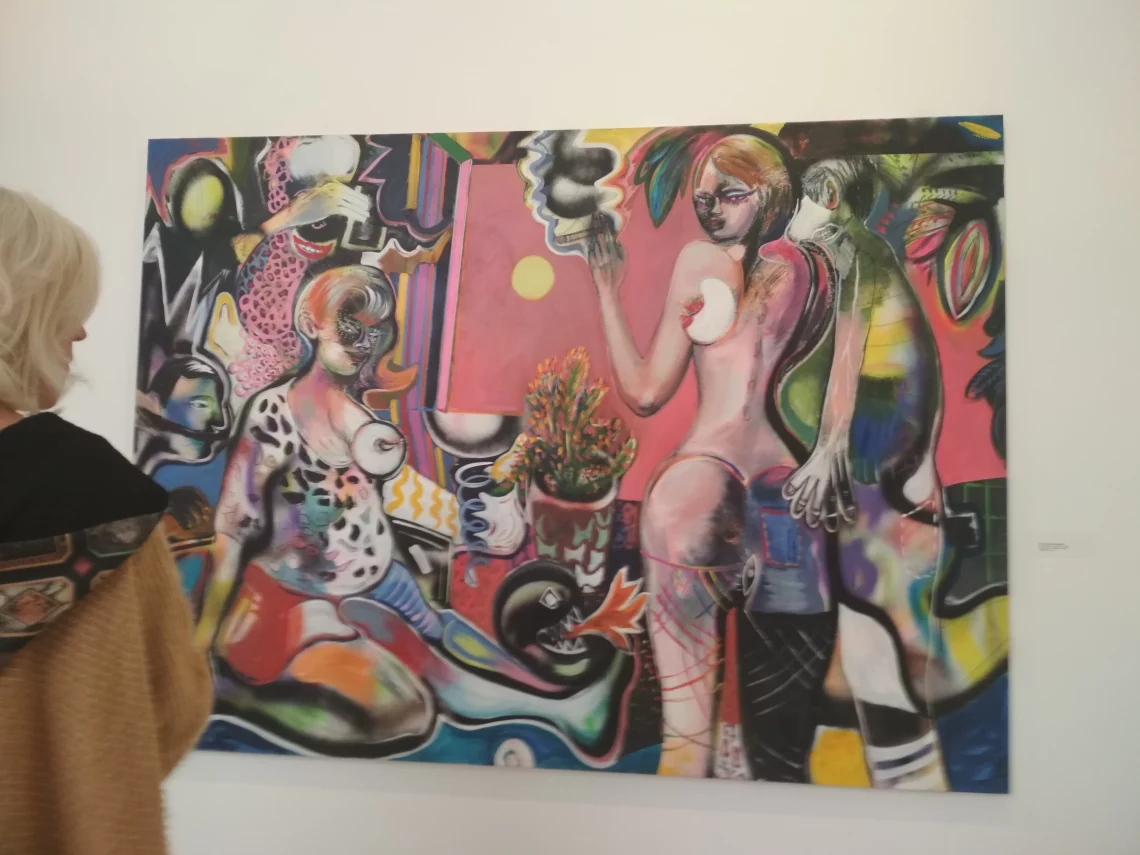
The Oscillating Girl
All I miss since Forever
Georgia Fambris
 The moment I reached Kolonaki square to attend the opening of the 3rd solo exhibition of visual artist Georgia Fambris titled “All I miss. Since forever.” heavy rain started and sonorous thunders were lightening the Athenian winter sky.
The moment I reached Kolonaki square to attend the opening of the 3rd solo exhibition of visual artist Georgia Fambris titled “All I miss. Since forever.” heavy rain started and sonorous thunders were lightening the Athenian winter sky.
Rushing down the stairs of Zoumboulakis art gallery, I was pleased to find out that due to weather conditions few visitors only had arrived exactly at eight o’clock. Unique opportunity for me to examine her work in a rather unusual serenity for an exhibition’s opening day.
The exhibition’s title “All I miss. Since forever.” has nothing to do with an actual missing or an actual forever. It refers to the psychological struggle, which people go through when trying to balance emotions and reality.
At first glance, the paintings of Georgia Fambris seem to capture random moments in a woman’s life. In reality, her work aims at a deep exploration of human trauma periods.
First Impression
As I entered the inner room of the venue to get a glass of wine, turning on my left there where a series of small in size paintings. In one a female figure lies in bed like a thrown rug doll while a sleepless eye watches her. In another Fambris presents herself like a cartoon character going through the pasta maker machine and becoming spaghetti. In a third, holding a hand mixer she attempts to mix the ingredients of a bowl she has put her head in. As placed one after the other those small-scale paintings seemed a day after day calendar of a woman’s oscillating psychology. In her current work, carefully thought-out details, some with acrylic and others with small collage, act as symbolic features necessary for creating a tense and restless atmosphere that stimulates the viewer’s eye to emerge what Munch calls the “inner pictures of the soul.”
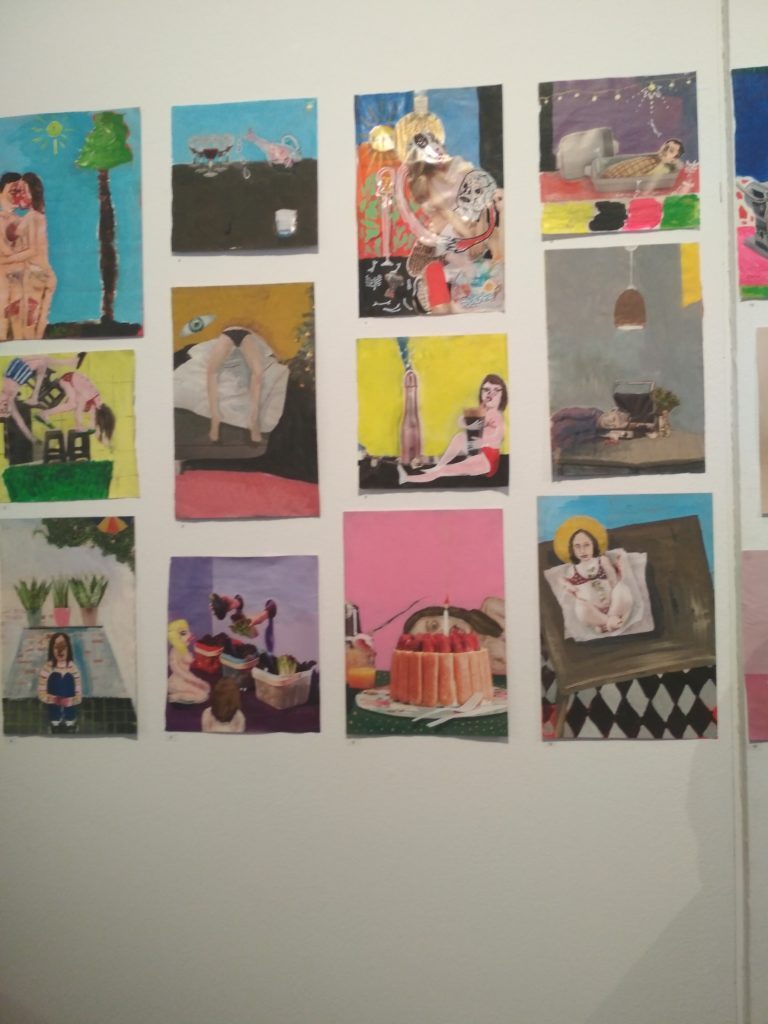
[“Nature is not only all that is visible to the eye… it also includes the inner pictures of the soul.” – Edvard Munch]
Fambris paintings have always been symbolic depictions of a mental and psychological state and not the reality in its purest form. Since 2015’s solo exhibition “Analogon”, the vulnerable girl has evolved to a strong woman. While she aims for greater public acceptance of her work, she also wishes for maintaining her personal identity intact.
It’s also the first time in the exhibited work of Georgia Fambris where collage plays a key role in the depiction of the oscillation. Small pieces of magazine’s photos and children’s mini stickers become part of the painting to reveal that there will always be the need for the inner soul to exist.
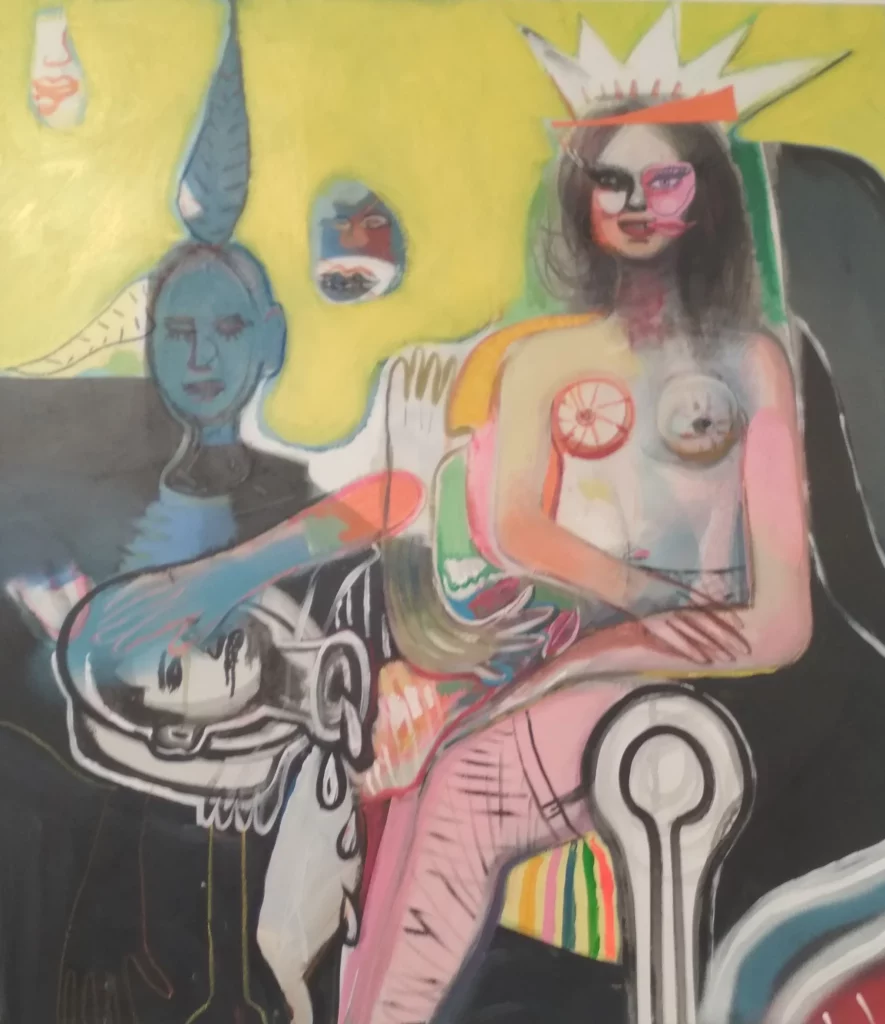
Salome No 2
Fambris also appears triumphant. In “Salome no.2”, sitting on her armchair like a queen, she stares the viewer right in the eyes crowned by innocence and purity. The orange sharp line in front of the white crown indicates creativity and success. A contradictory depiction to her nude body, sexy fishnet stockings and the freshly decapitated heads next to her. For Fambris what is real in life is beyond the automata.
Compliance with social norms contradicts the human need for self-fulfillment and control over our body, career, and ecosystem. Sometimes struggling but never defeated.
SHARE THE PAGE
The Oscillating Girl
In “The Oscillating girl”, the artist stands mentally and psychologically “nude” in front of a white canvas with a chain around her left foot.
Any move forward is prevented even blood circulation, turning calf and sole black. Her facial deformation on the painting and the collage of a beggar’s hands above a lying figure depicts a tremendous inner struggle between an artist’s needs and wants. In the middle of the artist’s nude body stands a small yellow Fambris. She depicts a rebellious inner soul activating memories, esoteric vision and encouraging meaningful communication.
No matter how many times it has been immobilized by fear or the social criticism she will always try to attract attention with her spontaneity, instability, warmth, and cheerfulness.
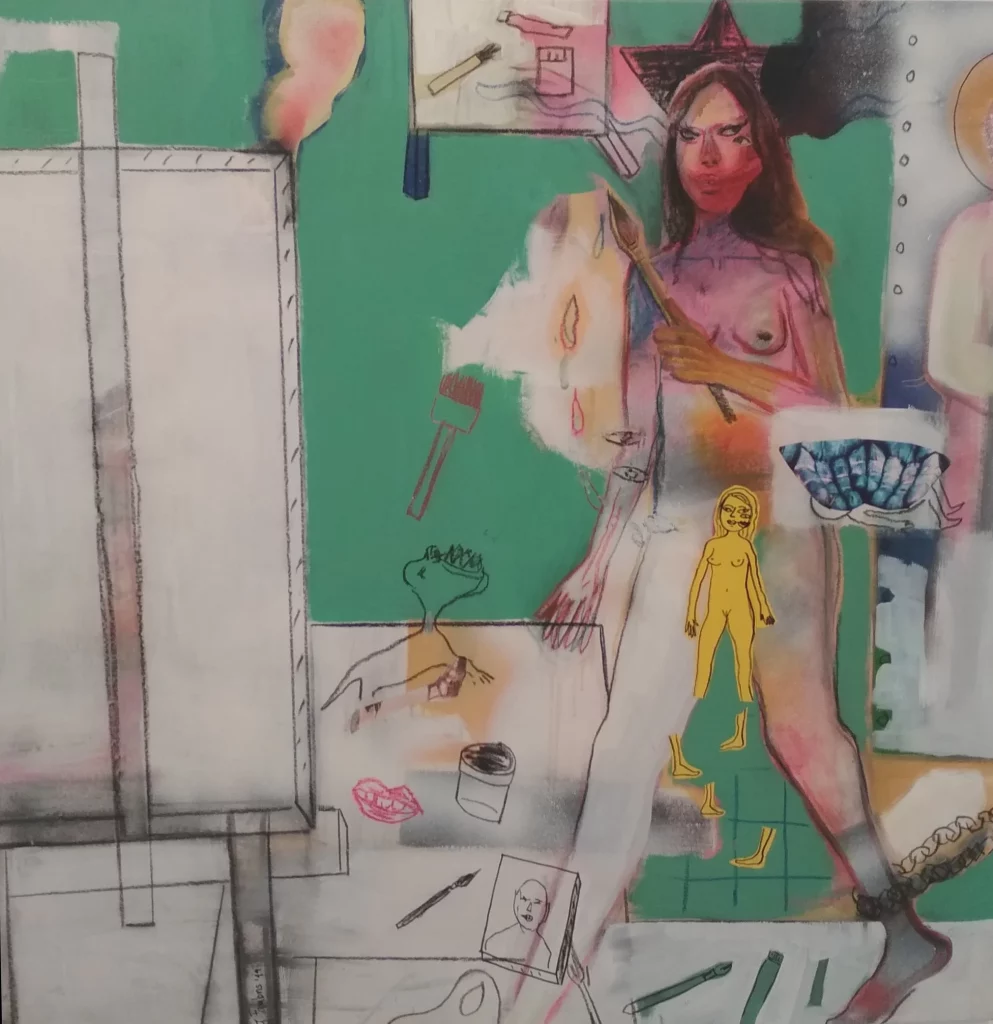
Biography
Born in 1973 in Genova, Italy. Upon her arrival in Greece in 1993, she starts studying painting at the Academy of Byzantine Iconography of Piraeus, Greece from which she graduates in 1998. In 2007 she starts her cooperation with Greek author Dimitris Sotakis by illustrating three of his books: “The corn man”, (2007), “The miracle of breathing” (2009), and “The cannibal who ate a Romanian” (2017). Many of her paintings are in private collections in Italy and Greece and in Frissira’s Museum. Georgia Fambris lives and works in Athens, Greece.
Photos by: athinas / © athina’s 2020
#athinas
Become part of athina’s team! Share your works, enthusiasm, and opinion about visual arts.
follow us

You May Also Like
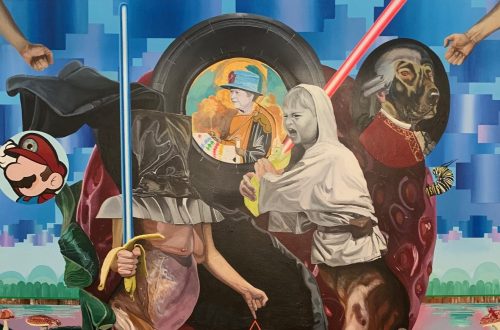
Michail Parlamas: Reconnecting with my inner child
3rd May 2023
Selfie In Kitchen Dorm
27th August 2024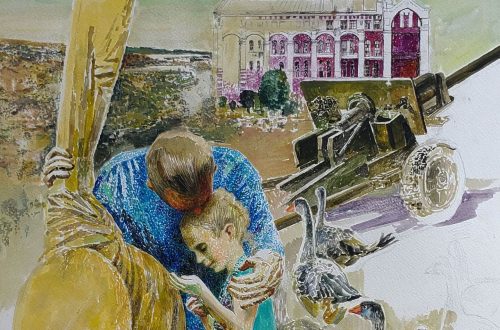

 When you visit any website, it may store or retrieve information on your browser, mostly in the form of cookies. This information might be about you, your preferences or your device and is mostly used to make the site work as you expect it to. The information does not usually directly identify you, but it can give you a more personalized web experience. Because we respect your right to privacy, you can choose not to allow some types of cookies. Click on the different category headings to find out more and change our default settings. However, blocking some types of cookies may impact your experience of the site and the services we are able to offer. For more information please read our
When you visit any website, it may store or retrieve information on your browser, mostly in the form of cookies. This information might be about you, your preferences or your device and is mostly used to make the site work as you expect it to. The information does not usually directly identify you, but it can give you a more personalized web experience. Because we respect your right to privacy, you can choose not to allow some types of cookies. Click on the different category headings to find out more and change our default settings. However, blocking some types of cookies may impact your experience of the site and the services we are able to offer. For more information please read our